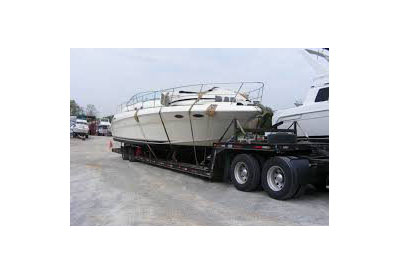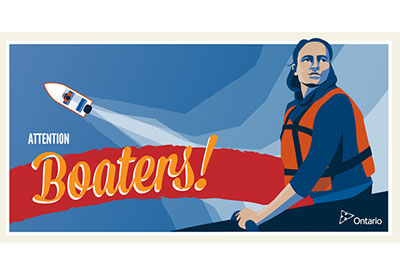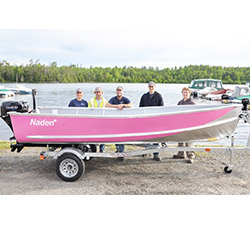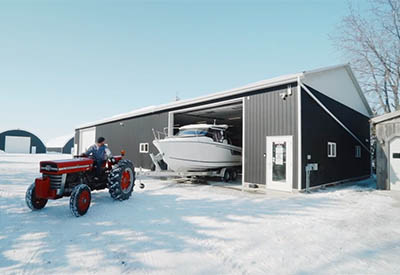Some Tips on Vessel Transport

July 25, 2017
We are going to discuss some of the things we’ve learned over the years when it comes to moving vessels. In our company we often get involved in different aspects of vessel transporting because we operate our own boatyards in addition to being used boat brokers and dealers for new boats. The goal today is to help you avoid some of the pitfalls that we have fallen into ourselves, often lessons we learned the hard and expensive way.
This is a bit intimidating for me because all of you listening are experienced professionals but maybe we can give you some ideas that you have not thought of before.
 We should start by saying that every broker needs to decide just how involved they want to be. Some prefer not to get in the middle of arranging for vessel transport due to the potential liability or ill will should something go wrong. That is a valid concern. Here at RCR Yachts, however, our goal is to add value to the broker-client experience wherever we can. In the long run we feel this is best for all parties. The majority of clients don’t know what they don’t know, and we are in a position to help them, thereby solidifying the benefits of using an experienced professional broker.
We should start by saying that every broker needs to decide just how involved they want to be. Some prefer not to get in the middle of arranging for vessel transport due to the potential liability or ill will should something go wrong. That is a valid concern. Here at RCR Yachts, however, our goal is to add value to the broker-client experience wherever we can. In the long run we feel this is best for all parties. The majority of clients don’t know what they don’t know, and we are in a position to help them, thereby solidifying the benefits of using an experienced professional broker.
There are three common modes of moving vessels around. The first is ocean transport aboard ship. The second is moving a vessel on its own bottom. The third is over the road towing or trucking. We will touch a bit on the first two and then focus on the third.
Our experience with ocean transport has mostly been in receiving new boats built in and imported from Europe. The arrangements are made by the builder who handles importing and all we do is send a truck to pick up the boat at the port. Scheduling a truck can be iffy at times and once the boat is cleared for pickup you have a limited time to get it out of the docks. Ships can be delayed by weather, and the time it takes for unloading and customs clearance varies. Scheduling the truck can therefore be tricky and the folks on the dock are not always very flexible so be forewarned.
Recently we had a new boat arrive in a shipping container, which was a first for us. We sent a truck and trailer to pick it up, only to find that the boat had been loaded at an angle to fit inside the container and nobody told us about that. The rig we sent could not ship the boat back in the angled cradle. This resulted in a fire drill and a different rig had to be sent. Chalk that one up to experience. As it turns out we might have been further ahead by having the container delivered to our yard for unloading here but we were not told that was an option, we learned of that later from another dealer.
The biggest take-away for us on imported boats has been carefully inspecting the boat and reporting any damage immediately. You normally have only 48 hours to report a damage claim or you are out of luck. Compensation for damage reported after that is very difficult if not impossible to recover.
We know of a boat that was shipped shrink-wrapped as deck cargo and when it arrived at the dealership it was discovered that someone had been living inside during the trip. The interior of the boat was a mess as a result, another reason for prompt inspection upon arrival.
An advancement in ocean transport has been the development of specially designed ships that can load the boats fully-rigged right from the water. They now have roll-on, roll-off, float-on, float-off, and lift-on, and lift-off ships. When they arrive at their destination the boats can be quickly unloaded and are ready to move away on their own bottom immediately. We have had owners move boats to and from the Continental US, Caribbean and Europe this way. It has certainly opened up the movement of vessels for sale and purchase and also expanded cruising options as well.
We are no experts in ocean transport so we involve the services of those who do it professionally.
A more common way to move vessels is on their own bottom, with or without a captain and crew. When using a paid captain it behooves you to get references, preferably from people you know. The term “captain” is sometimes used loosely, even if the person is not licensed, so some caution is required. Someone with experience in inland or coastal moves who may not be fully qualified for offshore passages. It pays to have delivery crew who have experience on the size and type of vessel being moved and for the waters involved.
 Vessel insurance is generally location specific. When moving a vessel from home waters it may not be properly covered elsewhere. Prior to any water delivery, in addition to having proper insurance in place, the presence of appropriate safety gear in good working order should be confirmed. Basic spares such as water pump impeller and engine oil should be aboard also. A float plan should be created and copied to all involved parties. Ideally crew will give updates along the way so the whereabouts of the vessel are known. When considering the cost of the move, in addition to the pay for Captain and crew, allowance must be made for fuel, dockage and other expenses expected to be incurred along the way.
Vessel insurance is generally location specific. When moving a vessel from home waters it may not be properly covered elsewhere. Prior to any water delivery, in addition to having proper insurance in place, the presence of appropriate safety gear in good working order should be confirmed. Basic spares such as water pump impeller and engine oil should be aboard also. A float plan should be created and copied to all involved parties. Ideally crew will give updates along the way so the whereabouts of the vessel are known. When considering the cost of the move, in addition to the pay for Captain and crew, allowance must be made for fuel, dockage and other expenses expected to be incurred along the way.
Occasionally an owner may be interested in going along on the trip to help, to learn, for the experience of voyaging in unfamiliar waters, to reduce the total cost for crew or to make sure their vessel is cared for during the journey. In the event the owner is aboard the delineation of ultimate authority for the safety and operation of the vessel must be made clear. Normally a captain will insist on being in charge even when the owner is there also. We have found that owners who do not have time to move their vessel themselves either to or from a bucket list cruising ground can get there by hiring a crew for one or both legs of the trip.
Further, this is a touchy subject but on occasion we have counseled owners against making a passage we do not feel they are qualified to do, or do without assistance. Safety should always be the number one concern.
By far the most common means of transporting vessels where we are involved is over the road, either by on a commercial tractor trailer or towing on the vessel’s own trailer.
Let’s start with issues common to both methods:
Remember that the driver is always responsible for any move, the same as the captain on a vessel. The driver should never leave until he or she has inspected the load, the trailer and the vehicle and is comfortable with everything.
There is no substitute for calling ahead and making sure the load is ready for pickup and the destination yard is ready to accept the delivery, and the paperwork is in order.
Surprisingly people do not always have their payment arrangements made in advance. If payment is not made up front then the driver won’t release the load at the destination without a check waiting for him. Failing to make proper payment arrangements results in a very upset driver who has to wait, and a boatyard that is upset because they cannot unload as scheduled.
Here are some pointers for moving a boat on its own trailer:
Make sure the boat and trailer are properly insured, and that the driver is properly licensed.
Check to see that the trailer is registered and has a current license plate. Yes, people will show up without a plate.
Check tires, brakes and especially lights. Check that the wiring on the trailer will connect with the wiring on the tow vehicle. In the last few weeks we have had two instances where a buyer arrived to tow his boat home for the first time. In each case they were told what they needed to bring so that the trailer electrical plug would mate with their truck. In both cases they arrived without a way to connect and we had to give them an adaptor plug. Fortunately we keep extra plugs on hand which made us heroes.
Proper tiedown straps are a must. Straps should have a twist in them so they do not vibrate at highway speed. Plenty of tape is key for moving boats on trailers. Tape up the extra length of strap, tape up the handle on the tongue jack, etc.
The vehicle hitch needs to be at the right height for the trailer and obviously you need the correct ball size too. This means calling in advance to have the distance from the hitch to the pavement measured, and double-check the ball size.
Check to see there is the right amount of tongue weight on the trailer. Too little and the trailer may tend to fishtale and the tongue may hop up and down over bumps. Too much tongue weight depresses the rear end of the tow vehicle and tends to lift the front end, making the truck squirrely to steer.
Obviously the vehicle also needs to have the appropriate towing capacity for the load being pulled, with the same insurance, registration and similar issues as the trailer.
Is the driver adequately experienced for the move?
The boat needs to be checked over before pulling out. Then stop periodically during the trip to make sure all is still OK.
I hooked onto a boat once that was supposed to be good to go. I got a couple of miles down the road and the bow of the boat popped up because the boat was full of water inside (which could not be seen from outside) and all the water sloshed to the back inside the boat and lifted the tongue. My bad for not checking inside the boat myself before taking off.
Some tips for over the road tractor trailer transport:
Pricing out a move is often more complicated than it first seems. Customers will hear a price per mile but this usually does not include wide load permits or pilot cars that may be required for larger vessels. The routing sometimes cannot go direct from point A to point B due to restrictions on high and wide loads, increasing the trip mileage and cost. A move should only be quoted by the trucking outfit itself.
It is important to properly vet the trucker when getting quotes unless you are working with a familiar outfit. Last fall we had a customer who did not like the quote we had gotten for him from our regular trucker. He found a low price on line and hired a fellow who showed up with a totally unfit trailer. He did not understand he was picking up a sailboat and had no way to bunk the boat. He ended up having to leave, a good thing because his rig looked like its next move should have been to the junk yard. The customer then called the trucker we had suggested in the first place and the move went without a hitch. There is a wide variation in the quality of truckers so be careful of low price quotes.
When comparing the price of a move by water versus a move by truck the total cost of truck transport may be more than expected when all aspects have been considered. In addition to the over the road trucking fee there are also the loading and unloading costs, and charges for packing and prepping for transport. We cannot emphasize enough the importance of proper pack and prep.
All loose gear should be boxed or otherwise secured. Booms and large objects, if stored inside the boat, must be carefully padded so as not to damage the interior. If they can be properly secured on deck that is often a better place for them. Windshield wipers on powerboats should be taped down, hatches secured and in some cases hatches may need to be tied across the top to prevent them from blowing open. You want the boat sealed against water intrusion during the trip so ports must be togged down and the mast hole in the deck of a sailboat sealed over.
When packing the boat, especially if there is a lot of loose gear, it should be marked off on a checklist. We use the inventory that was part of the boat sale. Starting with that we add loose gear items that may not be on the list.
Everything is checked off and noted where it is stowed. It is not uncommon for the new owner to call to say nobody shipped the docklines or some other item, because they were stowed under berths and nobody mentioned where they were hiding. Leave the checklist in the chart table and save a copy for yourself. The checklist also avoids having to ship that extra spinnaker later that was in the stockroom that was somehow forgotten.
Finally, batteries are often stored off the boat and can be forgotten when loading, especially when the truck shows up early or unannounced. Once the truck has left you are SOL because you aren’t going to be easily shipping the batteries by themselves.
The longer the move, the more careful one needs to be when packing and prepping. Over the course of a long distance the movement back and forth of even small items will mar finishes. Assume that the driver will have to hit the brakes at some point and we don’t want anything free to fly around. Hatches should be locked and if you use padlocks they should be wrapped with tape so as not to mar the hatch as they swing back and forth during the move. The location of the key for the companionway lock needs to be noted on the Bill of Lading and transmitted to the new owner in advance, same with the combination, and don’t forget the engine ignition key.
Someone should inspect the vessel upon arrival or as soon as possible afterward. Again, claims for shipping damage must be made very soon or they may be denied. Even experienced people make mistakes. Last year we had a mast delivered that was apparently bent slightly during transport. It came into the yard during a hectic period and the crew just took the mast off the truck and set it on the rack, they did not examine it carefully enough. When it was time to rig the boat the bend was discovered but it was too late then to prove it had been a trucking issue. That was an expensive one.
One common cause of damage during shipment is hitting an object like a bridge due to an over width, or more commonly over height, load. Before the truck arrives the boat should be measured and dimensions given to the trucker so he brings the appropriate rig, often meaning a low bed trailer or in the case of a deep draft sailboat a deep well trailer to get the keel as low as possible.
If it is a tall boat items may have to be removed to get the loaded boat down to legal height, in most places this is 13’6” off the road surface. If the vessel cannot be brought down to legal height it will have to take a longer circuitous route where clearances are higher and pilot cars will be required. This obviously increases the cost of the move. Sometimes we have to remove the keel and rudder of a deep draft racing sailboat which adds to the expense at either end. Some years ago we shipped a deep draft racing boat to San Diego. Rather than have the keel and rudder removed the owner elected to pay a lot more to have the boat shipped by a much longer route, down through the southern states, because he wanted the boat ready to sail as soon as he got it. Not all truckers want to move an over-height load.
On sailboats getting down to legal height often means removing pulpits, pedestal guards, lifeline stanchions, Dorade vents, cabintop winches, instrument pods, etc., depending on how much the height needs to be lowered. On powerboats it could mean radar masts, arches, searchlights, flybridges, etc. You want to have as much of this work done as possible before the truck arrives so as not to delay the trucker or the boatyard. Even then it is not uncommon to have to remove more items once the boat is loaded and measured again.
A word of caution when removing items with wiring, we have seen the remover just cut the wires which makes a mess for the person reinstalling at the receiving end. This is more likely to happen if the work is not done prior to when the truck shows up.
Getting back to the cost of the move, the labor to get the boat to legal height and then the cost to reinstall everything at the destination must be taken into account. Customers don’t like surprises.
Some yards have restrictions on access that need to be considered. Presence of a tight turn or low underpass needs to be conveyed to the trucker in advance. In one of our yards there is a hump in the entrance road and a deep well trailer tends to get hung up, so we must inform the trucker in advance of the minimum road clearance we can take.
The trucker also needs to know if there is a cradle that is to go with the boat, it may get left behind if there is not enough room or instructions were not given.
I spoke to a dispatcher friend who has over forty years in the boat transport business. I wanted to know what were the things that most often cause him trouble. He said at least 50% of the time the boat is not totally ready to move, especially if the owner made his or her own arrangements. Examples of the boat not being properly prepped that he mentioned: On sailboats the Windex is on the mast, turnbuckles are hanging down, dodger is on, boom is lying on the deck, lifering still on the stern rail and so forth. On powerboats the canvas is still on, deckchairs are in the cockpit, arch was not removed, etc.
People underestimate the importance of scheduling. You don’t just dial up 1-800 send a truck and one appears tomorrow. During the busiest times of the year there needs to be plenty of advance planning but then be prepared for delays. Construction, boats not being ready, a breakdown at the yard that delays unloading of the move prior to yours, weather, and other factors conspire to cause changes in schedule. It behooves you to alert all parties involved when there is a delay, the shipping yard, the receiving yard and anyone else who may be involved. Boatyards tend to be touchy, and with good reason, when a truck shows up unannounced, or when a truck fails to show and nobody alerts them to the change in plans.
To sum up we would like to reiterate the following key points:
Proper planning and scheduling is key
Check insurance, licenses and documents
Use capable, experienced people with proper equipment
Prepare for the move in advance
Proper packing is very important
Understand all the factors that make up the total cost in order to minimize surprises
Be sure to inspect the vessel for shipping damage upon arrival
I will finish with a story: We have a customer who bought a SeaRay 390 this spring who is taking it to the East Coast. We suggested that he take it by water through the NY Barge canal and Hudson River. He insisted on trucking it despite the extra cost. He has been pestering for weeks to get a truck. When the truck arrived yesterday and the driver measured the load he decided it could not be shipped with the hardtop on, despite assurances before hand that it could be. Then the receiving yard said they were not equipped to install the hardtop. So now the boat is going by water after all.
– Don Finkle RCR Yachts





























